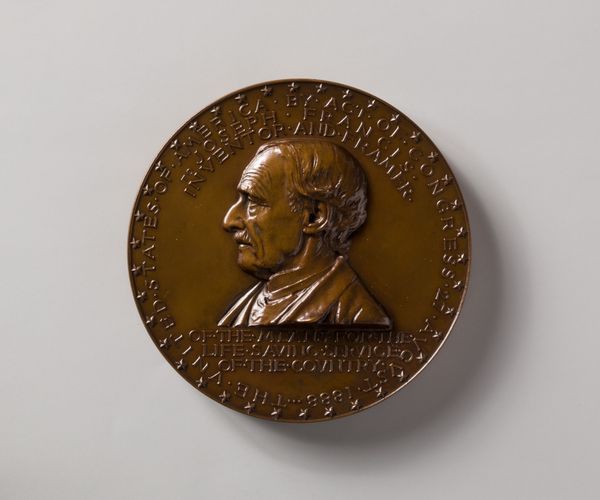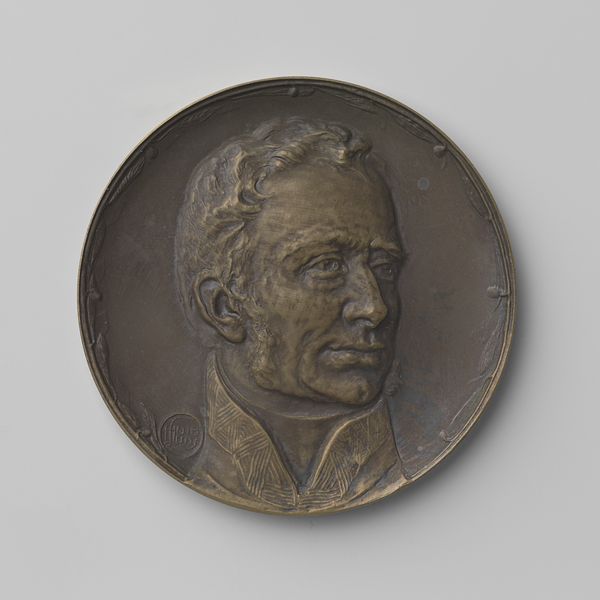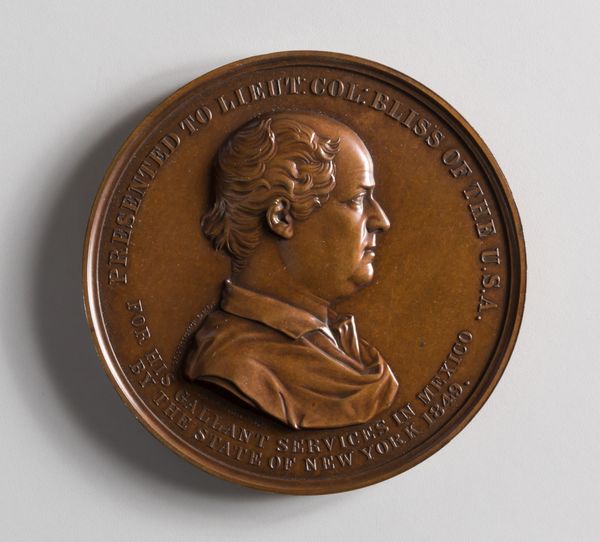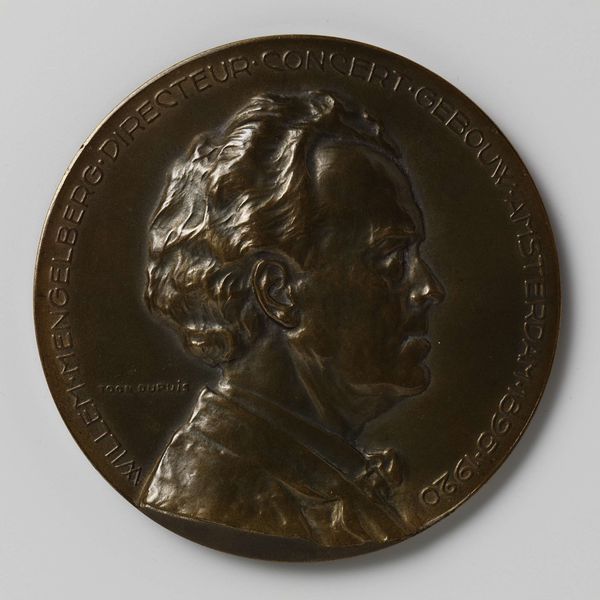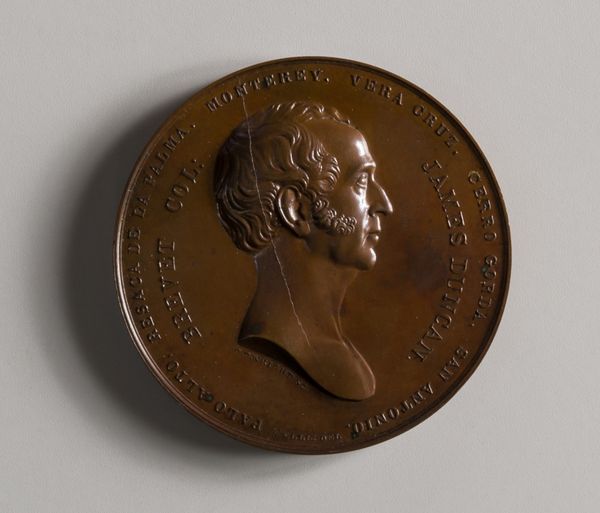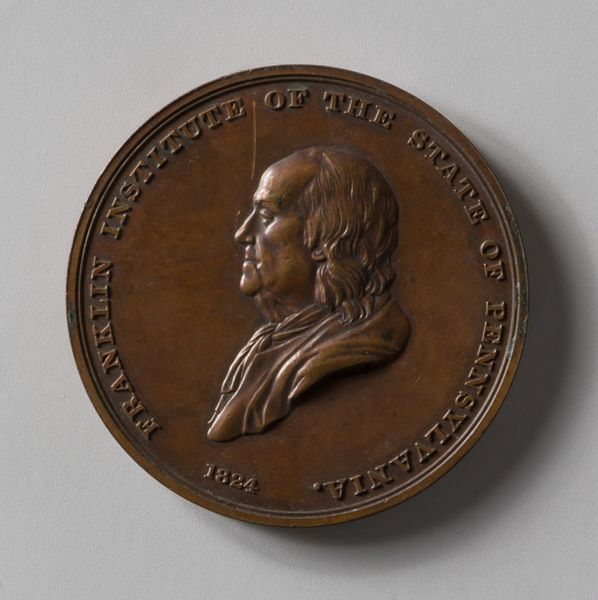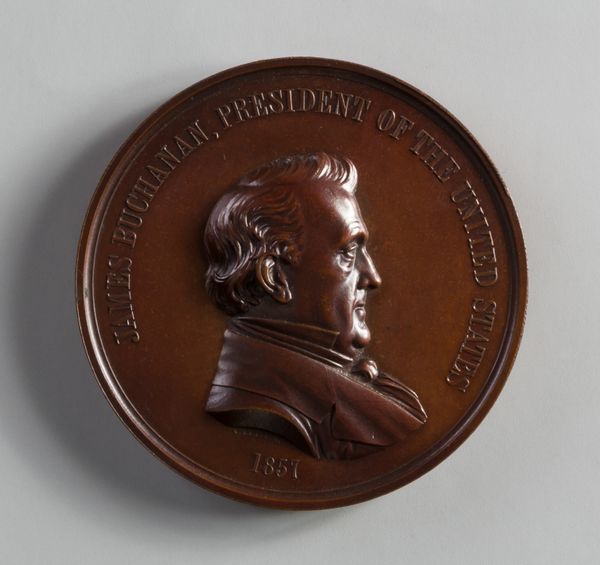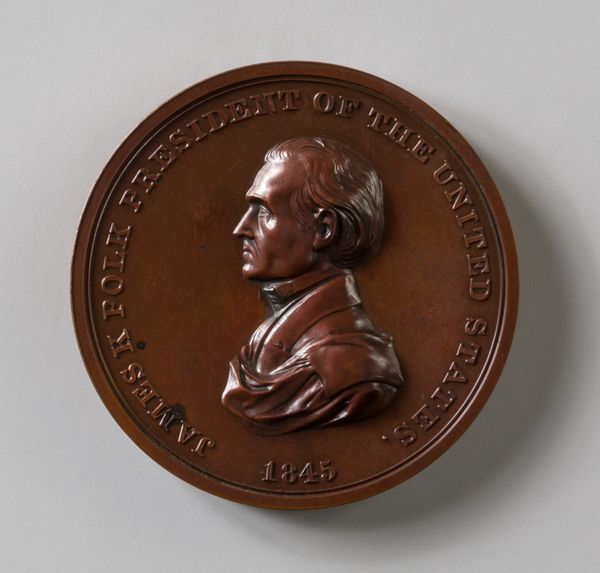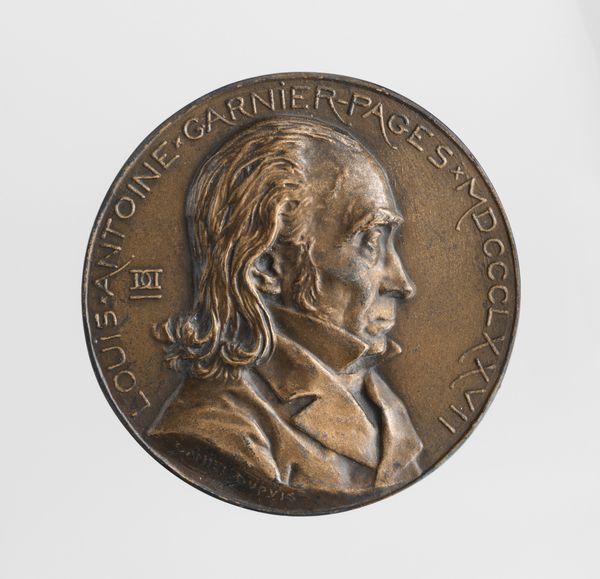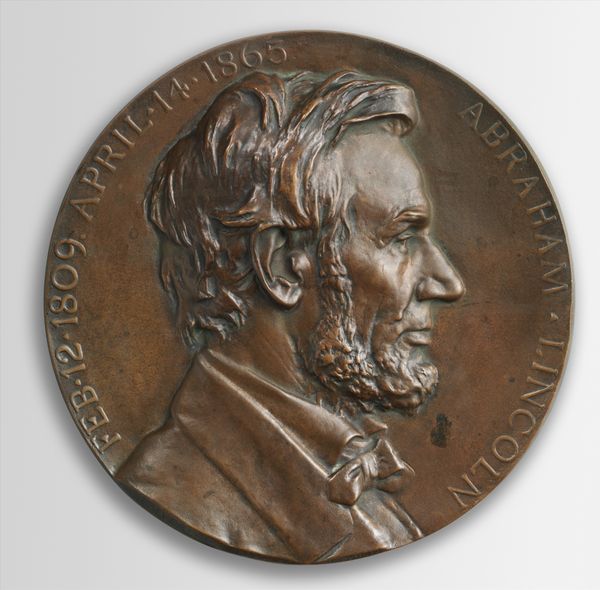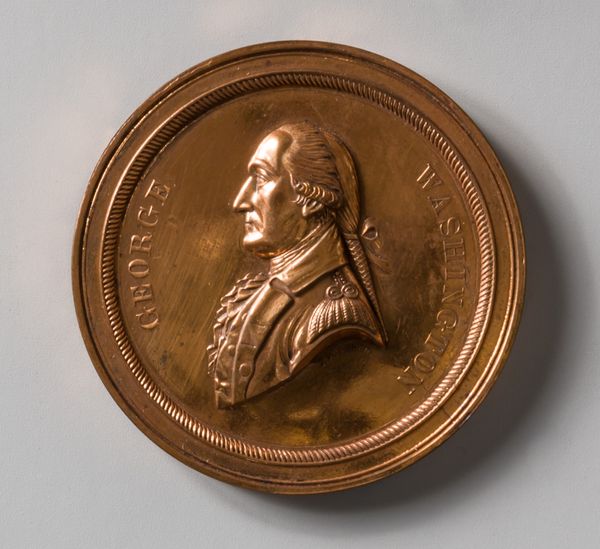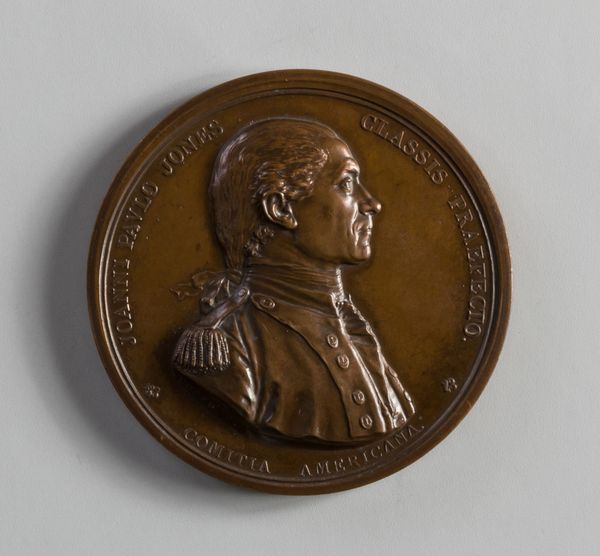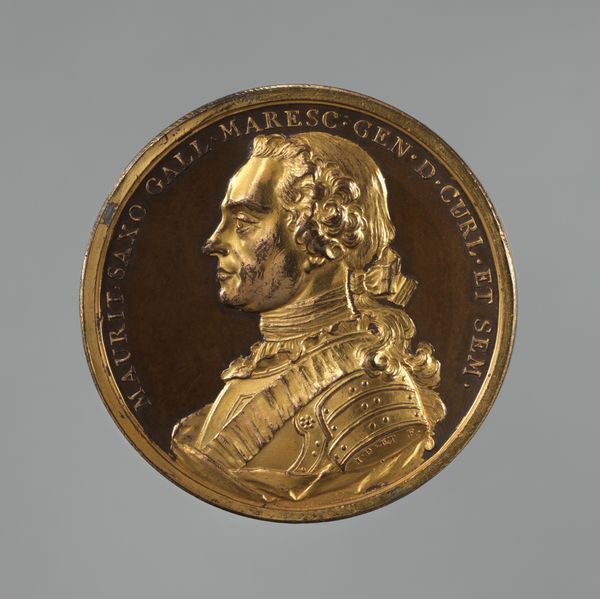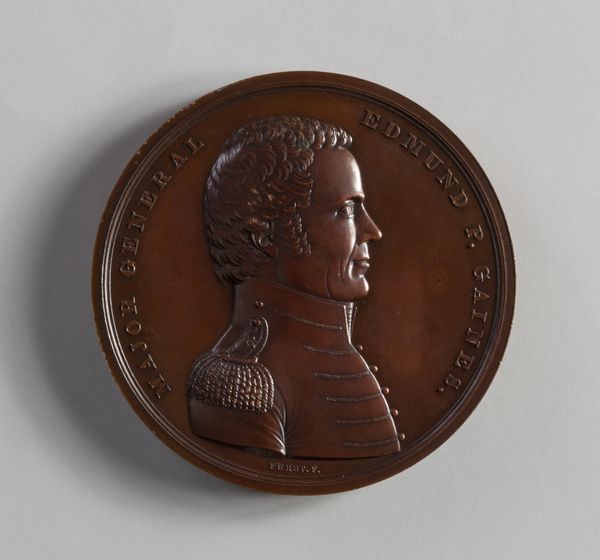
Grolier Club Memorial of Edgar Allen Poe 1909
0:00
0:00
relief, bronze, sculpture
#
portrait
#
neoclassicism
#
sculpture
#
relief
#
bronze
#
sculpture
Dimensions: Diam. 7 in. (17.8 cm)
Copyright: Public Domain
Curator: The artwork before us is a bronze relief, created by Edith Woodman Burroughs in 1909. It’s a memorial to Edgar Allan Poe, commissioned by the Grolier Club. Editor: Stark. That’s the word that jumps to mind. Poe’s portrait, emerging from that circular bronze, feels like a vision conjured from the shadows. He looks quite somber. Curator: Well, Burroughs presents him within the visual language of Neoclassicism. Note the classical profile portrait, evoking Roman commemorative medals. These associations elevate Poe's literary status, situating him within a lineage of artistic giants, though this memorial comes quite a bit after Poe's tragically short life. Editor: Right, that profile! And his expression. I see the Byronic hero, wrestling with inner demons. Bronze, of course, is forever linked to honor and remembrance, isn’t it? Think of cenotaphs, statues of generals. It certainly aims to cement Poe's place in the cultural consciousness. What’s that wreath-like symbol to the side? Curator: Good eye! That emblem is specific to the Grolier Club, a society dedicated to the appreciation of books and print. It situates this memorial within the context of literary institutions, ones that, arguably, weren't so welcoming to Poe during his lifetime. This memorial could be seen as a form of institutional belated recognition. Editor: So it’s about posthumous legitimization then. You know, in the romantic imagination, wreaths also symbolize mourning, but can be linked to honoring artistic excellence. That contrast – the Grolier emblem and the somber, solitary portrait – captures something very poignant about Poe’s complex legacy. Curator: I concur, and further, I'm also struck by the implicit dialogue it creates between art, literature, and social memory. Institutions help to decide who gets remembered and how, and by investing in memorial objects they in turn invest in their own sense of cultural significance. Editor: Definitely. Burroughs' sculpture provides a lens to consider what institutions valorize, which figures are considered worthy of remembrance, and how these selections can serve institutional narratives about what's valued in the past, or what *should* be valued in the present. It certainly gives a powerful afterimage. Curator: Yes, the memorial achieves an enduring testament both to Poe's genius, and the power of the institutions that grant enduring fame.
Comments
No comments
Be the first to comment and join the conversation on the ultimate creative platform.
